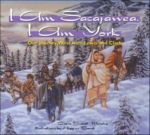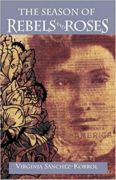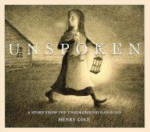Set in 1880s London, a 13 year old boy has an encounter with ‘the last wolf in England’ which changes the course of his life.
19th Century
Benito Juárez Fights For Justice
A fascinating picture book biography of Benito Juárez, president of Mexico during its tumultuous time of Liberal Reform.
Makoons (Birchbark House)
In this award-winning sequel to Chickadee, acclaimed author Louise Erdrich continues her celebrated Birchbark House series with the story of an Ojibwe family in nineteenth-century America.Named for the Ojibwe word for little bear, Makoons and his twin, Chickadee, have traveled with their family to the Great Plains of Dakota Territory. There they must learn to become buffalo hunters and once again help their people make a home in a new land. But Makoons has had a vision that foretells great challenges—challenges that his family may not be able to overcome.Based on Louise Erdrich’s own family history, this fifth book in the series features black-and-white interior illustrations, a note from the author about her research, and a map and glossary of Ojibwe terms.
The Brontes: The Fantastically Feminist (And Totally True) Story Of The Astonishing Authors
Meet the incredible Brontë family: Charlotte, Emily, Anne and Branwell Brontë are no ordinary children. Growing up on the wild, lonely moors of Yorkshire, they have nothing to entertain them but their imaginations and each other. So they invent extraordinary imaginery worlds, full of wars and love stories, soldiers, heroes and villains, ruled over by powerful women. As they grow up, the Brontës discover that the real world isn’t such a great place to be a girl. But they are so determined that their voices be heard, they overcome almost unbeatable odds to be bestselling authors.
John Henry
Retells the life of the legendary African American hero who raced against a steam drill to cut through a mountain.
The Lynching Of Louie Sam
Between 1882 and 1968 there were 4,742 lynchings in the United States. In Canada during the same period there was one–the hanging of American Indian Louie Sam. The year is 1884, and 15-year-old George Gillies lives in the Washington Territory, near the border with British Columbia. In this newly settled land, white immigrants have an uneasy relationship with the Native Indians. When George and his siblings discover the murdered body of a local white man, suspicion immediately falls on a young Indian named Louie Sam. George and his best friend, Pete, follow a lynch mob north into Canada, where the terrified boy is seized and hung. But even before the deed is done, George begins to have doubts. Louie Sam was a boy, only 14–could he really be a vicious murderer? Were the mob leaders motivated by justice, or were they hiding their own guilt? As George uncovers the truth–implicating Pete’s father and other prominent locals–tensions in the town rise, and he must face his own part in the tragedy. But standing up for justice has devastating consequences for George and his family. Inspired by the true story of the lynching, recently acknowledged as a historical injustice by Washington State, this powerful novel offers a stark depiction of historical racism and the harshness of settler life. The story will provoke readers to reflect on the dangers of mob mentality and the importance of speaking up for what’s right.
I Am Sacajawea, I Am York

When Lewis and Clark’s Corps of Discovery set out in the spring of 1804, they had chosen to go on an unprecedented, extremely dangerous journey. It would be the adventure of a lifetime. Unlike others in the group, two key members did not choose to join the hazardous expedition: York, Clark’s slave, and Sacajawea, considered to be the property of Charbonneau, the expedition’s translator. The unique knowledge and skills Sacajawea and York had were essential to the success of the trip. The dual stories of these two outsiders, who earned their way into the inner core of the Lewis and Clark Expedition, shed new light on one of the most exciting and important undertakings in American history.
The Season Of Rebels And Roses

Ranging from Puerto Rico to Cuba and the United States, this engaging novel for teens follows historical figures that were instrumental in the fight for self-determination in Puerto Rico. Addressing issues that remain relevant today racism, women’s rights and Puerto Rico’s status. The Season of Rebels and Roses also sheds light on women’s involvement in their nation’s liberation and their own.
Fiona’s Lace

“Fiona and her family moved from Ireland to Chicago to begin a new life. Yet, when the family is struck with misfortune, will Fiona’s lace help save them?”–
See the review at WOW Review, Volume 8, Issue 2
Unspoken

In this wordless picture book, a young Southern farm girl discovers a runaway slave hiding behind the corn crib in the barn and decides to help him.
Join the discussion of Unspoken as well as other books centered around relocation on our My Take/Your Take page.
